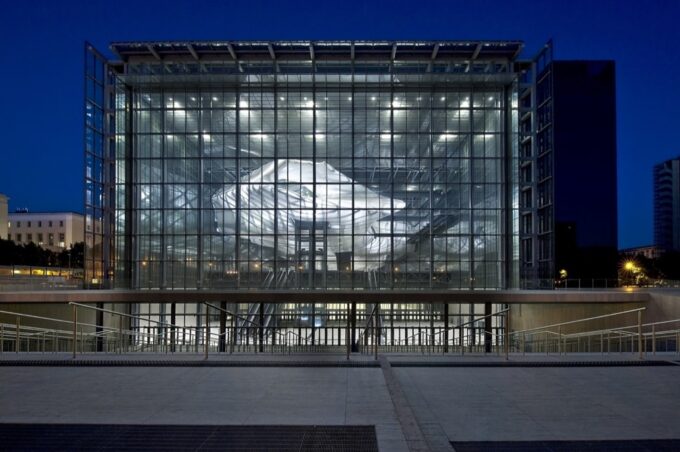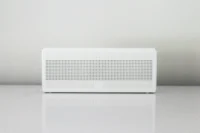- Home
- Articles
- Architectural Portfolio
- Architectral Presentation
- Inspirational Stories
- Architecture News
- Visualization
- BIM Industry
- Facade Design
- Parametric Design
- Career
- Landscape Architecture
- Construction
- Artificial Intelligence
- Sketching
- Design Softwares
- Diagrams
- Writing
- Architectural Tips
- Sustainability
- Courses
- Concept
- Technology
- History & Heritage
- Future of Architecture
- Guides & How-To
- Art & Culture
- Projects
- Interior Design
- Competitions
- Jobs
- Store
- Tools
- More
- Home
- Articles
- Architectural Portfolio
- Architectral Presentation
- Inspirational Stories
- Architecture News
- Visualization
- BIM Industry
- Facade Design
- Parametric Design
- Career
- Landscape Architecture
- Construction
- Artificial Intelligence
- Sketching
- Design Softwares
- Diagrams
- Writing
- Architectural Tips
- Sustainability
- Courses
- Concept
- Technology
- History & Heritage
- Future of Architecture
- Guides & How-To
- Art & Culture
- Projects
- Interior Design
- Competitions
- Jobs
- Store
- Tools
- More
The Future of Sustainable Architecture: Innovations for a Greener Tomorrow
Discover the future of sustainable architecture as we explore innovative practices designed to combat climate change. This article examines eco-friendly materials, energy-efficient designs, and the integration of smart technology. Learn how biophilic design enhances urban spaces and the economic advantages of sustainable buildings.

As we look ahead, the future of sustainable architecture stands at the crossroads of innovation and responsibility. With climate change pressing us to rethink our built environment, architects and designers are embracing eco-friendly practices that not only minimize environmental impact but also enhance the quality of life for communities.
We’re witnessing a shift toward materials and designs that harmonize with nature, promoting energy efficiency and resource conservation. From green roofs to smart technology, the possibilities are endless. Together, we can explore how these advancements will shape our cities and redefine the way we live, work, and interact with our surroundings. Join us as we dive into the exciting developments that promise to transform our architectural landscape for a sustainable future.

Table of Contents
ToggleThe Future of Sustainable Architecture
The future of sustainable architecture revolves around transformative practices and innovative technologies. We recognize that eco-friendly designs will address climate change and prioritize environmental responsibility. Architects and builders focus on utilizing natural materials, such as bamboo, rammed earth, and recycled metals, that minimize resource depletion and enhance energy efficiency.

Energy-efficient buildings play a crucial role in reducing greenhouse gas emissions. According to the U.S. Green Building Council, sustainable buildings can lower energy consumption by 30% to 50% compared to conventional structures. Our focus shifts towards integrating renewable energy sources, like solar panels and wind turbines, into designs that power buildings sustainably.
Smart technology significantly influences how we interact with built environments. We see the rise of smart sensors and IoT (Internet of Things) devices that optimize energy use and improve occupant comfort. These systems monitor energy consumption, adjust heating and cooling automatically, and enhance overall efficiency, contributing to greener ecosystems.
Urban development is also adapting to reflect sustainable practices. Biophilic design, which integrates nature into urban settings, helps foster resilience against climate impacts. We can expect more green roofs, living walls, and urban gardens that improve air quality, increase biodiversity, and enhance urban aesthetics.
Incorporating modular construction methods presents another promising future direction. Prefabrication reduces material waste and construction time, leading to lower carbon footprints. These methods support flexibility in architectural design and encourage sustainable practices in both residential and commercial projects.
Investments in sustainable architecture extend beyond immediate benefits. We also acknowledge the long-term economic advantages with lower operating costs and increased property values. As more entities prioritize sustainability, increased market demand for environmentally friendly spaces will drive innovation and collaboration among architects, builders, and communities.
Ultimately, the future of sustainable architecture represents a collective effort toward creating resilient spaces that harmonize with nature. Our commitment to this vision ensures a healthier planet for future generations.
Key Trends Shaping Sustainable Architecture
Sustainable architecture continues to evolve, driven by innovative ideas and eco-friendly practices. We observe several key trends shaping its future, leading to more responsible built environments.

Innovative Materials and Technologies
We exploit innovative materials that reduce environmental impact and enhance efficiency. Biodegradable materials, like mycelium and hempcrete, provide sustainable alternatives to traditional options.
We also utilize advanced technologies such as 3D printing, which allows for tailored designs while minimizing waste. Nanotechnology increasingly plays a role, enhancing material durability and energy efficiency.
Renewable energy integration is paramount. Buildings featuring solar panels, geothermal systems, and wind turbines reduce reliance on fossil fuels. These technologies empower structures to generate and store energy, helping decrease overall consumption.
Eco-Friendly Design Principles
We embrace eco-friendly design principles that promote sustainability throughout the construction process. Passive design strategies maximize natural light and ventilation, reducing energy use for heating and cooling.
We value biophilic design, which fosters connections with nature. This approach incorporates elements like indoor gardens, natural materials, and water features to improve mental well-being.
Sustainable site planning ensures minimal disruption to local ecosystems. We prioritize low-impact development techniques and preserve natural habitats, fostering biodiversity within urban environments.
Overall, these trends represent our commitment to creating resilient architectural solutions that harmonize with the surrounding ecosystem while meeting the needs of current and future generations.
The Role of Policy and Regulation
Policy and regulation play a crucial role in shaping the future of sustainable architecture. Effective frameworks not only guide sustainable practices but also support innovation and accountability within the construction industry.

Government Initiatives and Support
Government initiatives contribute significantly to the advancement of sustainable architecture. Local, state, and federal entities implement funding programs that encourage green building projects. For instance, tax incentives and grants promote the adoption of energy-efficient systems, leading to reduced operational costs for businesses and homeowners alike.
Moreover, governments can establish building codes that prioritize sustainability, mandating the use of renewable materials and technologies. Policies promoting public-private partnerships foster collaboration, enhancing resource allocation and expediting sustainable projects. As a result, these initiatives pave the way for a more sustainable built environment by driving demand for eco-friendly solutions.
Global Standards and Certifications
Global standards and certifications set benchmarks for sustainability in architecture. Organizations like the U.S. Green Building Council (USGBC) and the International Well Building Institute (IWBI) provide frameworks for assessing building performance. LEED (Leadership in Energy and Environmental Design) certification, for example, signifies compliance with high standards of environmental sustainability.
Certifications encourage architects and builders to adopt innovative practices that reduce carbon footprints and improve resiliency. They create a competitive advantage in the marketplace, motivating stakeholders to pursue green building strategies. By adhering to established standards, we foster a culture of accountability, transparency, and excellence in sustainable architecture.
Challenges Facing Sustainable Architecture
Sustainable architecture encounters several challenges that hinder its widespread adoption. Addressing these challenges requires a multifaceted approach that considers economic, social, and cultural factors.

Economic Barriers
Economic barriers significantly impact the advancement of sustainable architecture. High upfront costs for sustainable materials and technologies often discourage stakeholders from investing in eco-friendly designs. Initial construction expenses for green buildings can range from 5% to 20% above conventional methods. Additionally, a lack of financial incentives such as tax credits or grants from local governments can limit developers’ motivation to pursue sustainable options. We must advocate for increased funding and clearer financial models that demonstrate the long-term savings associated with energy-efficient buildings, which can reduce operational costs by as much as 30%.
Social and Cultural Considerations
Social and cultural considerations play a crucial role in the adoption of sustainable architecture. Communities may resist eco-friendly designs that diverge from traditional aesthetic norms, leading to pushback against new projects. Education and awareness are essential to shift perceptions and showcase the benefits of sustainable practices. Engaging local communities in the design process fosters a sense of ownership and acceptance. Incorporating culturally relevant elements, such as local materials and architectural styles, enhances the project’s acceptability, aligning it with community values. We must prioritize collaboration and communication with stakeholders to ensure that sustainable architecture meets both environmental goals and social expectations.
Conclusion
The future of sustainable architecture emphasizes continuous innovation and accountability. We recognize the potential of eco-friendly practices that significantly reduce environmental impacts while enhancing community well-being. Our collective focus on natural materials, like bamboo and rammed earth, supports resource conservation and energy efficiency, achieving energy consumption reductions from 30% to 50% compared to traditional designs.
We commit to integrating renewable energy sources, such as solar panels and wind turbines, alongside smart technology to optimize energy use and improve tenant comfort. Biophilic design principles enrich urban development, leading to features like green roofs and urban gardens, which boost air quality and promote biodiversity.
Our embrace of modular construction further minimizes material waste and accelerates project timelines. We anticipate long-term economic benefits from sustainable architecture, including lowered operating costs and increased property values, as demand for eco-friendly spaces surges.
Key trends like innovative materials—such as mycelium and hempcrete—and advanced technologies, including 3D printing and nanotechnology, bolster efficiency and waste reduction. Passive design strategies maximize natural light and airflow, enhancing harmony with the environment. Sustainable site planning prioritizes ecosystem preservation and biodiversity.
We acknowledge the critical nature of policy and regulation in promoting sustainable architecture. Effective frameworks facilitate responsible practices and encourage innovation within the construction sector. Government initiatives—financial aid, tax incentives, and grants—catalyze green building projects and highlight the necessity of establishing sustainability-focused building codes.
Global standards, such as LEED certifications, drive accountability in sustainable architecture, encouraging builders to pursue practices that lessen carbon footprints and adapt to changing conditions. Recognizing the various challenges, we face high upfront costs for sustainable materials and a lack of financial incentives, which may create barriers to investment in innovative designs.
Our advocacy for clearer financial models illustrates long-term savings tied to energy-efficient buildings. We also consider social and cultural dynamics, emphasizing the importance of engaging local communities to align projects with their values. Together, we strive to create resilient spaces that coexist with nature, ensuring a healthier planet for generations to come.
- biophilic design principles
- carbon-neutral construction
- climate resilient architecture
- Eco Friendly Architecture
- Energy Efficient Architecture
- environmentally friendly buildings
- Future of Architecture
- green architectural practices
- green building design
- green construction techniques
- innovative building solutions
- LEED certified buildings
- net-zero architecture
- passive solar design
- renewable energy in architecture
- smart building technologies
- sustainable architecture
- sustainable building materials
- sustainable design innovations
- sustainable urban development
Submit your architectural projects
Follow these steps for submission your project. Submission FormLatest Posts
The Future of Farmhouse Architecture: Where Heritage Meets High‑Performance
Future of farmhouse architecture: climate-smart, net-zero, off-grid-ready, and regional. Expert, practical guidance...
The Growth of Smart Homes: What’s Driving It, Where It’s Headed, and How We Prepare
Discover how smart homes are moving from niche to mainstream. See what’s...
Exploring Future Trends in Interior Design: Sustainability, Technology, and Personalization
Discover the future of interior design in our latest article, where innovation...
Exploring the Architecture of the Future: Innovations in Sustainability and Smart Design
Explore the future of architecture in our latest article, where technology and...












Leave a comment